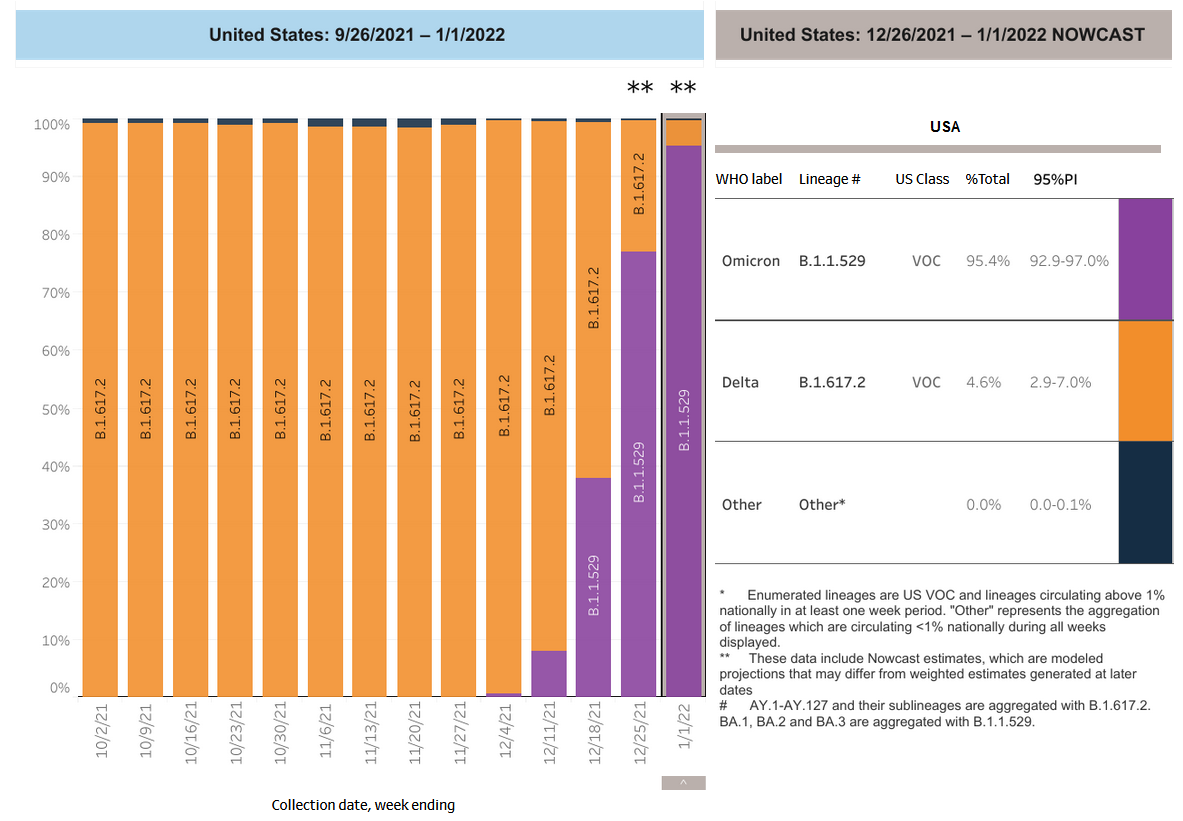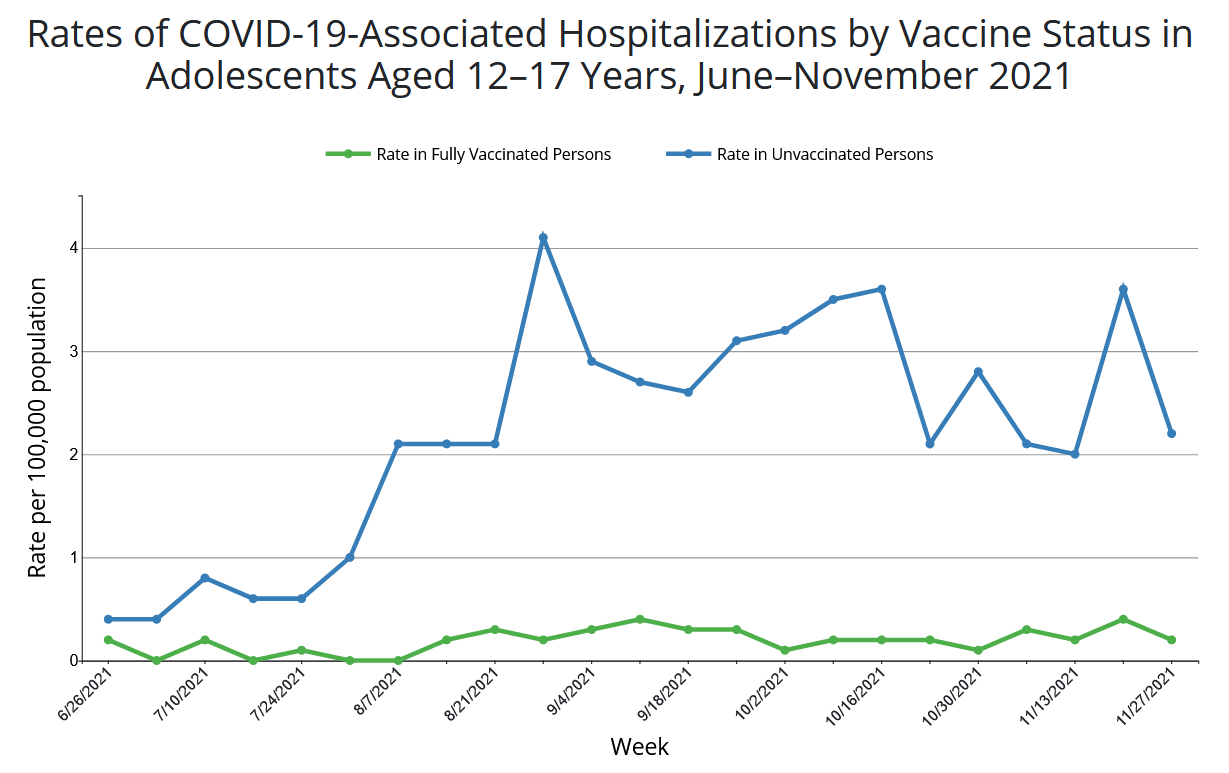It’s been two years since the onset of COVID-19, and the virus is more prevalent than ever before. The recent outbreak of the Omicron variant has fueled an unprecedented spike in COVID-19 cases, with the United States reporting a whopping 1 million new infections in one day, setting a new record for the highest daily total of any country since the pandemic started.
The sudden and aggressive influx of infections, along with the CDC’s new isolation guidelines, has left many Americans justifiably worried about what Omicron means for themselves and their families. Thankfully, despite its zealous transmissibility, Omicron appears to not be as severe as past strains and vaccines continue to be an effective measure in preventing hospitalizations. Here’s the data you need to know about the Omicron variant to protect yourself and those you care about.
Omicron is highly infectious
Initially discovered in early November of last year in South Africa, Omicron wasted no time in spreading across the rest of the planet, with approximately 95% of new infections in the U.S. being attributed to the variant. Omicron’s increased transmissibility has been made apparent from the raw percentage of caseloads, but how infectious exactly is it?
According to a preliminary study from LKS Faculty of Medicine at The University of Hong Kong, the Omicron variant multiplies 70 times faster than the Delta variant in lab-grown human bronchus. Although the study has yet to be peer-reviewed, the claims are bolstered by a similar study out of Ragon Institute of Massachusetts General Hospital, which found that the heavily mutated spike-protein of the Omicron variant gives it a leg up over other strains of the virus. This allows Omicron to infect human cells more easily and even muscle through the immune systems of vaccinated individuals.
Omicron is less virulent
Thankfully, Omicron’s unparalleled transmissibility hasn’t translated to a substantial increase in hospitalizations. A variety of studies have emerged from South Africa indicating that the Omicron variant is less dangerous than other strains, with one study from Discovery Health (South Africa’s largest private health insurer) finding that the omicron variant is 29% less likely to lead to hospitalization. South Africa’s National Institute for Communicable Diseases echoed these claims in a preliminary study after finding that the hospitalization risk of those infected with Omicron are 80% lower than those with prior strains. A second report from the same agency produced similar results, with patients admitted during the Omicron-dominated fourth wave being 73% less likely to have severe effects than those admitted during the Delta-dominated third wave.
These results aren’t just isolated to South Africa, either. A combined study consisting of both Japanese and American scientists found that hamsters and mice infected with Omicron experienced less lung damage and were less likely to die than those infected with Delta. Furthermore, a team of Scottish scientists from the University of Edinburgh came to a similar conclusion after finding that Omicron was associated with a two–thirds reduction in the risk of hospitalization when compared with Delta.
The reason for the novel strain’s milder symptoms is due to omicron’s diminished ability to establish an infection in the lung, according to a study from the University of Glasgow. TMPRSS2, a vital protein found in lung cells, was responsible for prior variants’ easy access to the lower respiratory system. However, variations in Omicron’s makeup make it significantly harder for TMPRSS2 to bind to it, in turn isolating most of the viral load to the upper regions of the respiratory system.
Vaccines remain the best defense
Although Omicron has demonstrated a concerning aptitude for bypassing the immune system of vaccinated individuals, vaccines remain one of the best measures in preventing severe illness and hospitalization. In the same study mentioned above, Discovery Health found that vaccines were 70% effective in preventing hospitalization and 33% effective in preventing infection.
Other studies have also explored the potential benefits of a booster shot, with Pfizer reporting that a third dose of BNT162b2 increases the neutralizing antibody titers by 25-fold. Furthermore, the University of Edinburgh found a 57% reduction in the odds of developing a symptomatic infection.
Currently, the CDC still recommends vaccinations as the best line of defense in preventing severe illness, hospitalizations, and death.

Source: The New York Times
Data-vigilance is key
In order to remain informed on the best course of action in protecting ourselves and our family amidst the Omicron outbreak, it’s critical that we continue to monitor the data and use it in our decision-making. To learn more about how data analytics is being used in fighting the COVID-19 pandemic, check out our white paper, “Population Health and Data Reporting Strategies in the Era of COVID-19.”
- How Spirits Brands Can Improve Brand Loyalty with Data Analytics - January 30, 2024
- The Collapse of Herbl, and How Other Cannabis Distributors Can Avoid the Same Fate - January 24, 2024
- Top 5 Blog Posts of 2023 - December 28, 2023






